What does monkeypox feel like? Here’s what those who’ve had painful symptoms say
The global spread of monkeypox has led to some of those infected developing painful symptoms, including lesions that may appear on various parts of the body.
In the U.S., there are more than 5,800 reported monkeypox cases nationwide in 48 states as of Aug. 1, according to the Centers for Disease Control and Prevention. Cases have not been recorded in the neighboring states of Montana and Wyoming.
The World Health Organization reported in late July that more than 18,000 cases have been confirmed worldwide, and the WHO has declared the outbreak a public health emergency of international concern.
With the current outbreak, the experiences of those infected can vary from mild to severe and not everyone’s course of infection will look the same, according to Dr. Marshall Glesby, the associate chief of the division of infectious diseases at Weill Cornell Medical College in New York.
Dr. Glesby told McClatchy News that he has seen a “skewed sample” of patients with more severe monkeypox cases as well as “an array of manifestations” when it comes to an infection. For some, he said the disease has been debilitating, occasionally requiring pain killers.
“Monkeypox can infect anyone,” Glesby added, noting that the virus does not discriminate.
Here’s what a few people with painful monkeypox symptoms have said:
Harun Tulunay
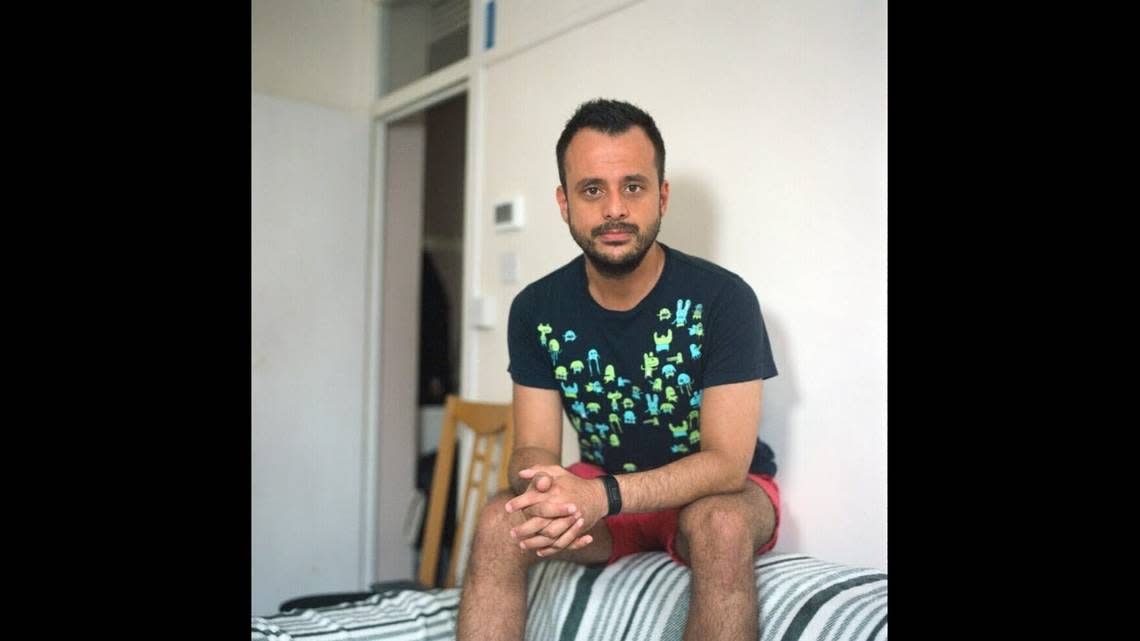
When Harun Tulunay, 35, of London, began experiencing monkeypox symptoms — including a persistent high fever,, fatigue and chills — he initially thought he had COVID-19.
However, a few negative COVID-19 test results ruled out that possibility in mid-June, Tulunay told McClatchy News in a phone interview, and he eventually would spend 11 days in the hospital.
“I was in bed under the blankets all the time, and I was very tired, shivering a lot, taking lots of ibuprofen. Then, a couple of days later a rash came later on.”
Tulunay’s glands became swollen, and he described them as “rock hard and painful.” Within a few weeks of the infection, his throat became sore as lesions and scars started to cover it.
However, he said his monkeypox diagnosis came “very late” due to a misinterpretation of his symptoms.
When Tulunay visited a sexual health clinic around June 22, he was told that his symptoms did not appear to be monkeypox because his rash looked like a “fever rash.” Still, the clinic tested him for the disease. As his results were pending, another doctor who he visited took a look at his throat and told him he may have tonsillitis.
Tulunay said his throat “shut down” after the visit to the sexual health clinic, and he was unable to eat or drink, resulting in his hospitalization on June 24. At the hospital, he agreed to be fed through an IV.
“It was so painful that I was kicking the bed every time when I needed to swallow my spit,” he told McClatchy News.
On June 26, Tulunay received his monkeypox positive test result via text message while in the hospital. There, blisters started appearing on his body, including on his head, hands and feet.
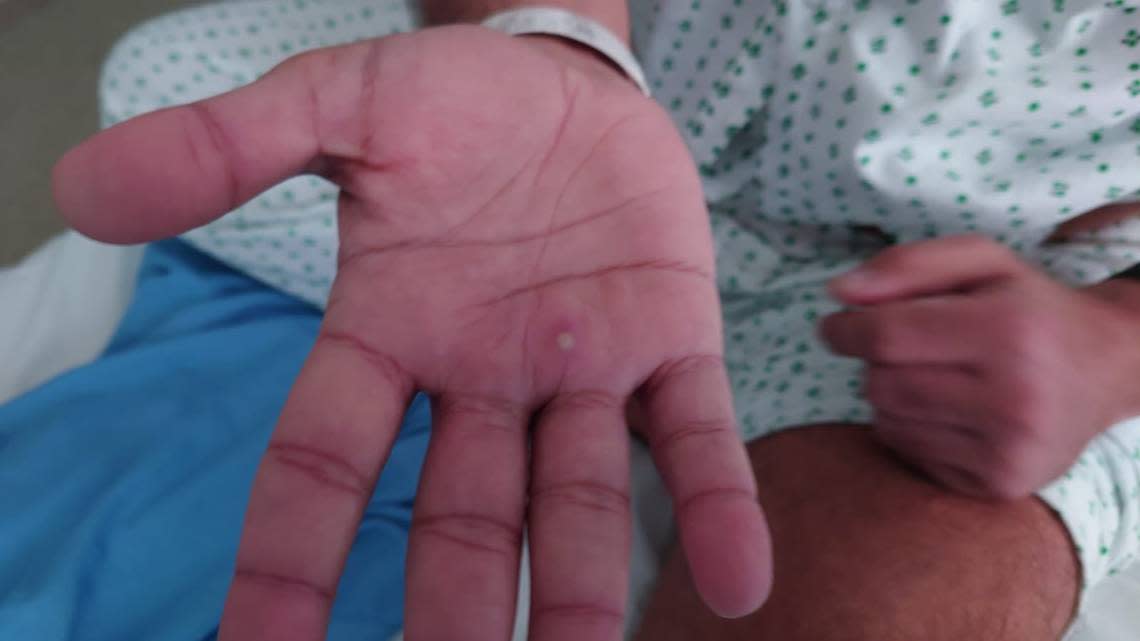
Tulunay said these were not painful for him, but a large lesion, which grew on his nose, “was a different story” and extremely painful.
“It started really small, with a tiny white dot, and it just grew and grew and grew and grew,” Tulunay said. “It just started to have its own living space on my face.”
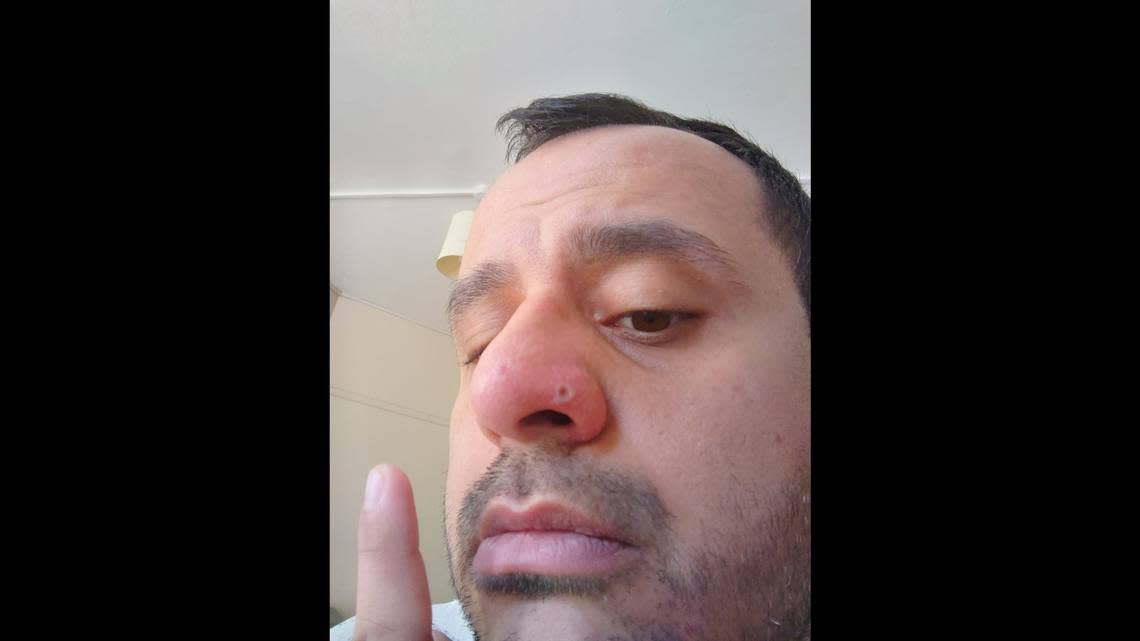
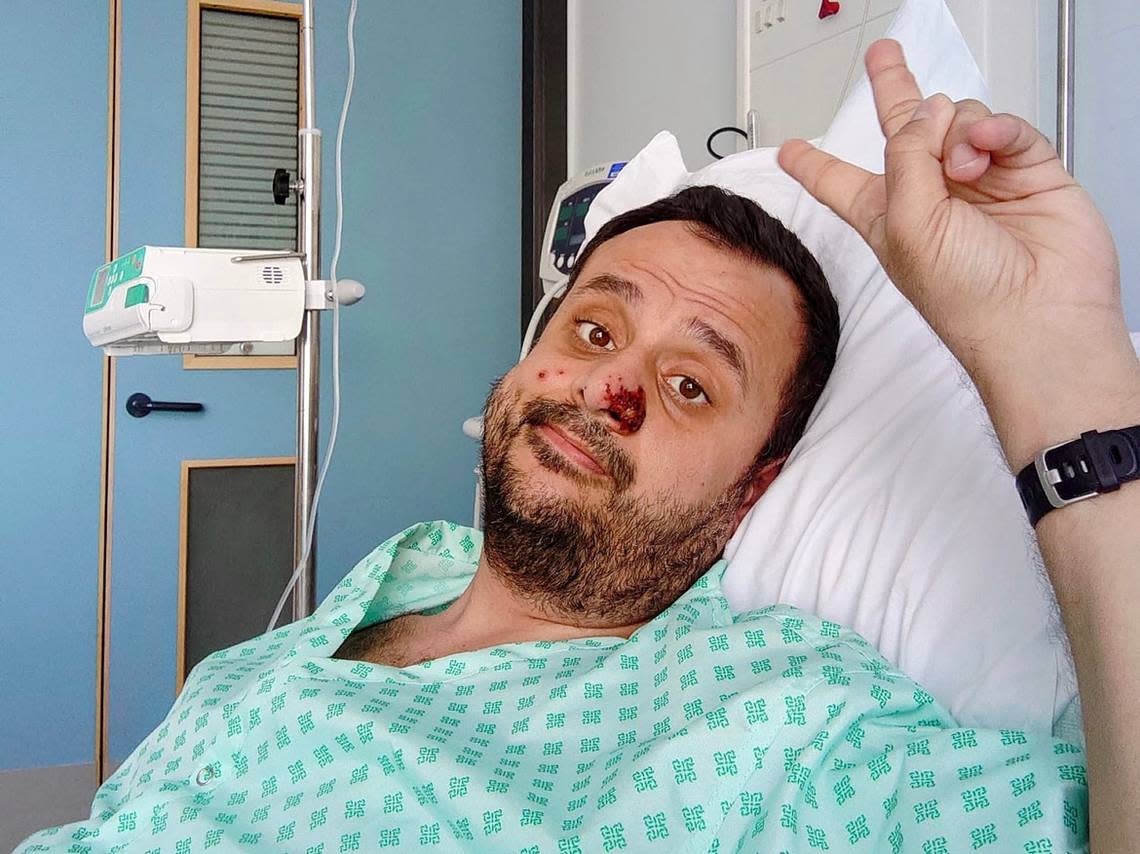
Doctors gave him antibiotics to stop the lesion’s spread on his nose and opioids to deal with the pain from both the lesion and his throat, he added.
Additionally, he was put on a tecovirimat treatment, an antiviral medication used for monkeypox and smallpox, and roughly four days after taking it he could swallow small sips of water.
Tulunay was released from the hospital after 11 days and self-isolated for roughly two-and-a-half weeks, he said.
As of Aug. 2, Tulunay said he feels great and is no longer contagious.
Tulunay, who is gay, wants to raise more awareness about the disease after contracting monkeypox from a partner through skin and saliva contact. He said some mislabel it as a virus that only spreads within gay communities.
The WHO says that while “98% of cases are among men who have sex with men, anyone exposed can get monkeypox.”
“It is not a gay disease,” Tulunay said. “Lots of women and children are diagnosed with it.”
Tulunay, who also has HIV, is a sexual and mental health advocate who works as a training coordinator for an HIV charity called Positivity UK, and shares his health experiences to empower others, he told McClatchy News.
TikTok user @Tonanty
A man on TikTok with the username @tonanty has been sharing his monkeypox experience in videos that have gained millions of views to date.
In one video, he said “after a few days of having fevers” he was “really tired” before lesions started appearing.
Then, he said smaller lesions started appearing on his face, including his cheeks, before they started getting bigger.
“It moves really fast.”
On the fourth day of lesions, he said he cried the whole day and that they were “really itchy” while showing a photo of several on his face.
He described day five of lesions as “rock bottom” when he needed treatment due to how “intense” the infection had become.
In another video, he said on day 11, while in Los Angeles, his “whole body (was) basically covered.”
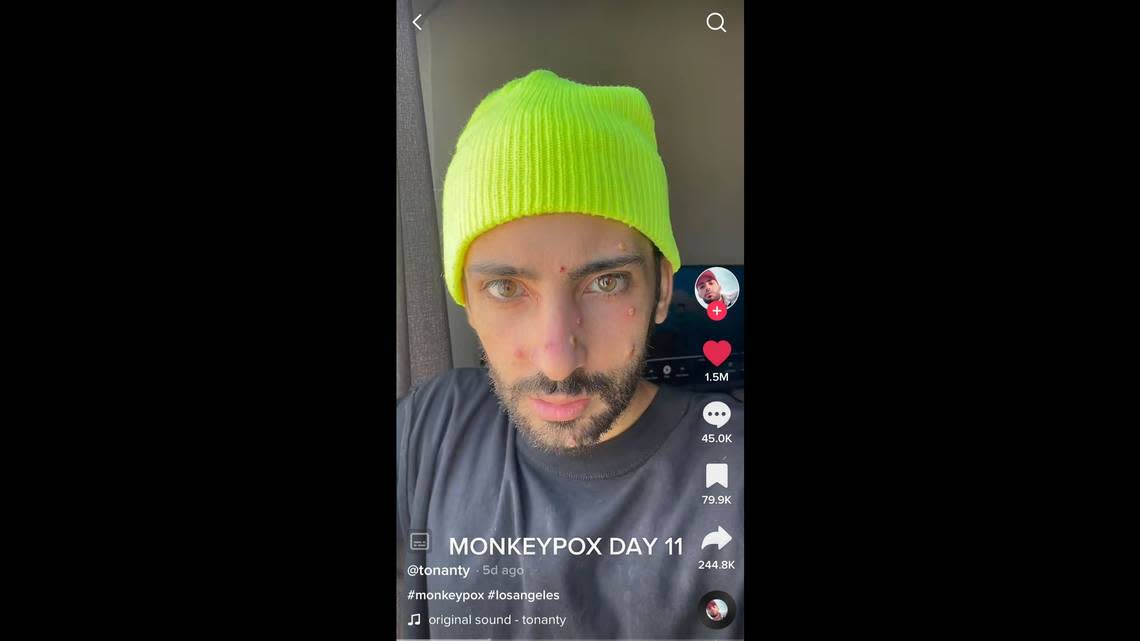
“It’s not fun, get the vaccine and stay safe. This is really painful,” the user said.
Matt Ford
In the beginning, Matt Ford, 30, a California-based actor and writer, said he had “intense flu-like symptoms including coughing, sore throat, and fever, and full-body chills” after he was told he was exposed to the virus on June 17, according to People. Additionally, he saw he had new lesions on his body.
After his flu-like symptoms began to subside, he noticed more lesions appearing and found 25 of them, the outlet reported.
“Obviously the [lesions] that already existed in the underwear area were very, very painful and the ones on my face, but I started getting them on my torso, legs, arms, shoulders, scalp; they kind of appeared everywhere,” Ford told People.
Ford was one of the earlier monkeypox cases in the U.S., according to People, and was not prescribed antiviral medication or vaccines and had to “wait it out.”
“The only thing that really helped me with the pain was taking Epsom salt baths,” he told People.
Ultimately, he was prescribed painkillers to manage the pain from his lesions before he recovered from monkeypox on July 12, according to People.
Dr. Glesby told McClatchy News that monkeypox is not “contagious the way COVID-19 is contagious,” but “close physical contact certainly can lead to transmission.”
At the Weill Cornell medical center’s campus at New York Presbyterian hospital, he said nearly 50 people have been treated for monkeypox to date.
Second US city declares monkeypox a public health emergency. The ‘epicenter’ is NYC
Do you need the monkeypox vaccine? What to know as thousands more doses coming to U.S.
‘Hypercontagious’ omicron BA.5 variant resistant to prior COVID vaccination, study says
Polio found in US for the first time in years, New York officials say. What to know
